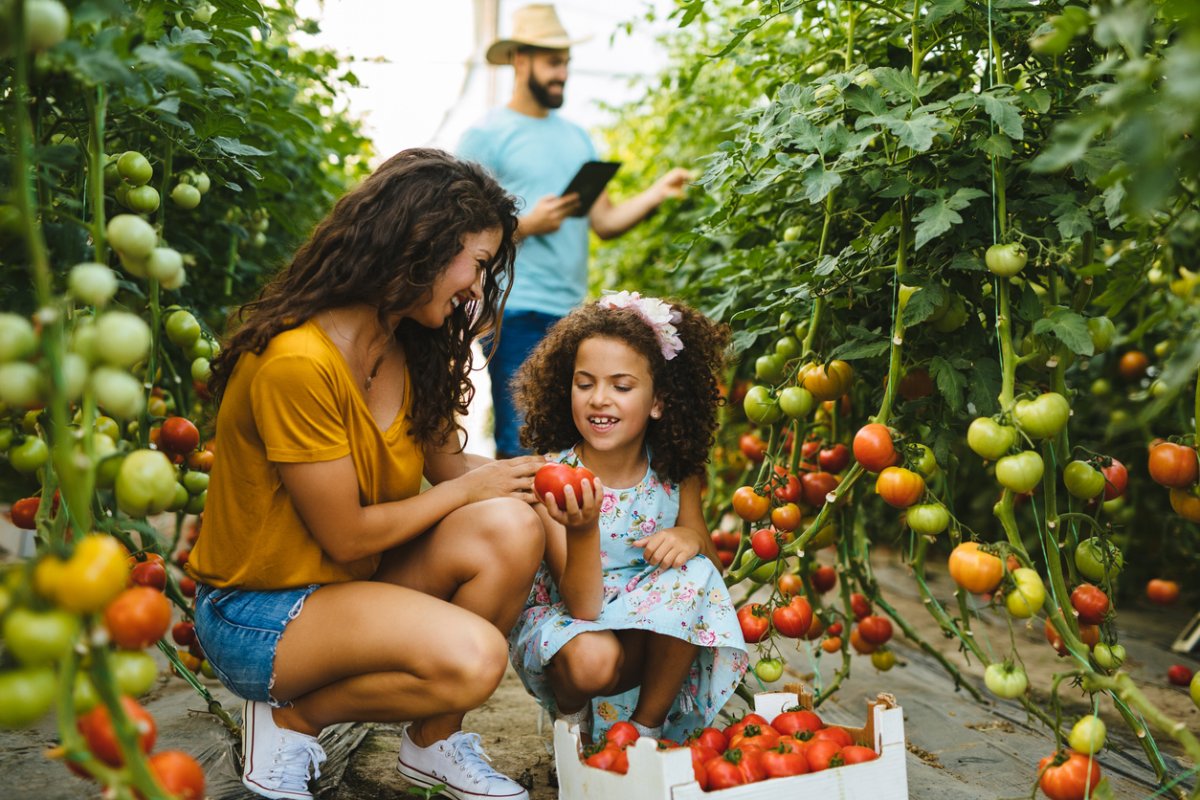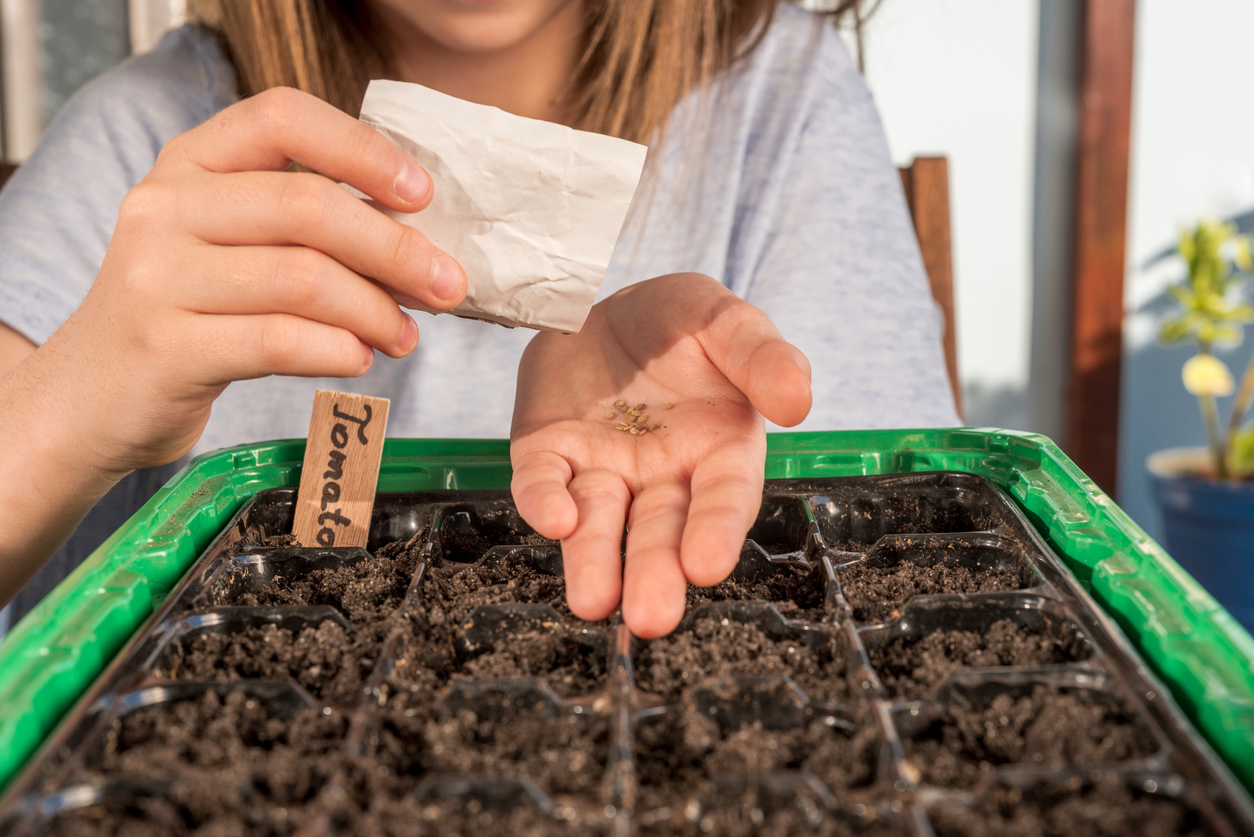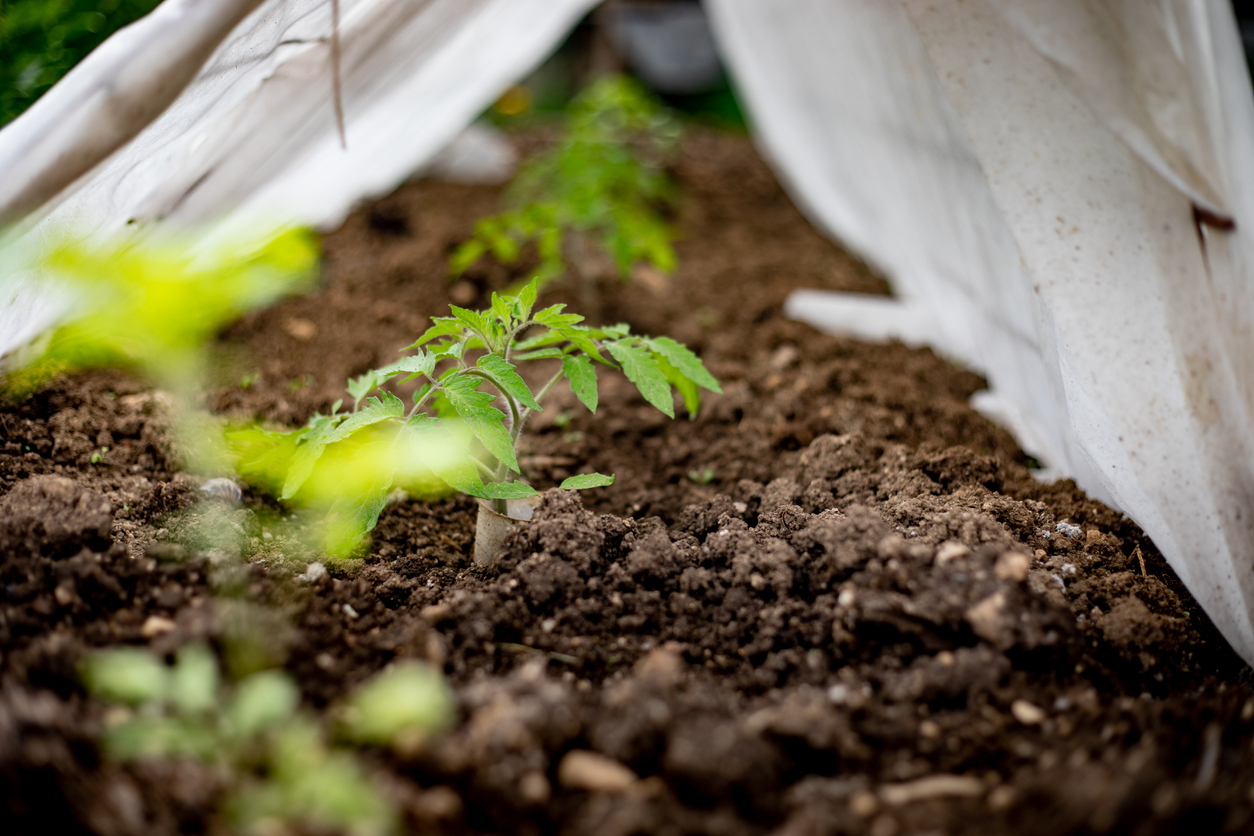

We may earn revenue from the products available on this page and participate in affiliate programs. Learn More ›
Q: The home I recently moved into has plenty of outdoor space for growing tomatoes—my favorite ingredient to cook with—but I have little gardening experience. To give myself the greatest chance for success, can you tell me when is the best time to plant tomatoes?
A: The answer for when to plant tomatoes depends on whether you start from seed or transplant seedlings. Getting an early start with seedlings ensures tomatoes have enough time to reach maturity. For transplants, the key is to plant early enough to give tomatoes time to mature but not so early that they succumb to freezing conditions. With a bit of careful planning and weather monitoring, you can grow thriving tomato plants that provide some delicious fruit.
RELATED: Solved! How to Overcome 11 Common Tomato Plant Problems
Consider the days to maturity needed for the tomato varieties you plan to plant.
When it comes to starting from seed, tomato plants need enough time to reach maturity before cold fall and winter weather sets in. In warm climates, it’s possible to direct-sow tomatoes outside. But for those living in locations with short growing seasons, it’s necessary to start tomato seeds indoors. Most tomatoes take a long time to mature and bear fruit—typically around 100 days. Large tomatoes tend to take longer to produce a usable harvest, while cherry and mini tomato varieties mature faster.
The ideal strategy is to grow varieties of tomatoes that mature and produce fruit at different points in the season. Plant a mix of early, middle, and late-season types, including determinate and indeterminate tomatoes, for a consistent supply of the tasty fruits.
Tomatoes can also be planted late in the growing season. Still, it’s essential to note the variety’s days to maturity. If planting later in the season, pick a tomato variety that takes fewer days to reach maturity and produce a harvest—ultra-compact varieties like Micro Tom may be a good choice. Short-season tomatoes tend to be indeterminate varieties, which are plants that continue to set fruit throughout the season.
Other faster-growing tomato varieties to consider include:
- Early Girl
- Fourth of July
- Sun Gold
- Black Prince
- Siberian
Start tomato seeds indoors approximately 6 weeks before the last frost in your region.

Planting tomatoes indoors helps them get a jump-start on growing until they can be transplanted outside; these heat-loving plants need about 6 to 8 weeks indoors. It’s critical to get the timing right, so resist the urge to start too early. One may assume an earlier start means getting an earlier tomato harvest, but it can be difficult to deal with bulky plants when short on indoor space. And hardening off large transplants can be awkward. One exception is perhaps if you have a greenhouse space to hold your tomatoes early in the spring.
To figure out the exact seed-starting date, find out your region’s last and first frost dates. Then, count backward from your average last frost date.
RELATED: The Best Fertilizers for Tomatoes
Plant tomato seedlings outdoors when overnight temperatures remain above 50 degrees Fahrenheit.
Don’t rely solely on the average last frost date, however. Generally, tomatoes can go outside about a week or two after the last frost in an area, but this isn’t a strict rule. Weather conditions can vary from year to year.
Because tomatoes require warm weather to thrive and don’t do well in cool temperatures, it’s imperative to wait until nighttime temperatures are consistently above 50 degrees Fahrenheit. Keep in mind that a frost can occur even if it’s warm during the day.
Use the frost date as a guide and keep tabs on the weather forecast to inform your decision of when to transplant. Additionally, remember that tomatoes and other seedlings shouldn’t go straight into the ground. Transplants require a period of hardening off to become accustomed to outdoor conditions—think of it as an icebreaker for plants. They need some time to gradually warm up to outdoor life and wind.
Soil temperature is another good indicator of when it’s the right time to transplant tomatoes. Aim to plant tomatoes when the soil temperature is consistently between 65 and 70 degrees Fahrenheit.
Consider your garden location and when it receives 6 to 8 hours of full sun per day.

Don’t forget to consider location when planting tomato seedlings. Even if a garden is technically in USDA hardiness zone 6, there are microclimates within these zones that tend to be warmer or cooler than the rest. Make sure to plant tomatoes in a spot that receives at least 6 hours of full sun per day—8 hours is even better.
If tomatoes must be planted early, use protection like row covers or cloches to keep plants nice and toasty until warm weather sets in for the season. Just know that planting earlier doesn’t usually speed up time to harvest and comes with risks, such as exposing tomato seedlings to a killing frost.
